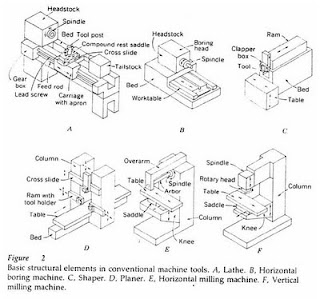You need to begin the solution to a design problem with a clear, unambiguous definition of the problem. Unlike an analysis problem, a design problem often begins as a vague, abstract idea in the mind of the designer. Creating a clear definition of a design problem is more difficult than, defining an analysis problem. The definition of a design problem may evolve through a series of steps or processes as you develop a more complete understanding of the problem.
Identify and Establish the Need
Engineering design activity always occurs in response to a human need. Before you can develop a problem definition statement for a design problem, you need to recognize the need for a new product, system, or machine. Thomas Newcomen saw the need for a machine to pump the water from the bottom of coal mines in England. Recognizing this human need provided him the stimulus for designing the first steam engine in 1712.
Before engineers can clearly define a design problem, they must see and understand this need.
Although engineers are generally involved in defining the problem, they may not be the ones who initially recognize the need. In private industry, market forces generally establish the need for a new design. A company's survival depends on producing a product that people will buy and can be manufactured and sold at a profit. Ultimately, consumers establish a need, because they will purchase and use a product that they
perceive as meeting a need for comfort, health, recreation, transportation, shelter, and so on. Likewise, the citizens of a government decide whether they need safe drinking water, roads and highways, libraries, schools, fire protection, and so on.
The perceived need, however, may not be the real need. Before you delve into the details of producing a solution, you need to make sure you have enough information to generate a clear, unambiguous problem definition that addresses the real need. The following example illustrates the importance of understanding the need before attempting a solution.
Example: Automobile Airbag Inflation - How Not to Solve a Problem
A company that manufactures automobile airbags has a problem with an unacceptably high rate of failure in the inflation of the bag. During testing, 10 percent of the bags do not fully inflate. An engineer is assigned the job of solving the problem. At first the engineer defines the problem as a failure in the materials and construction of the inflation device. The engineer begins to solve this problem by producing a more robust inflation device. After considerable effort, the engineer discovers that improving the inflation device does not change the failure rate in the bags. Eventually, this engineer re-examines the initial definition of the problem. The company investigates the airbag inflation problem further and discovers that a high degree of variability in the tightness of folds is
responsible for the failure of some bags to inflate. At the time the bags were folded and packed by people on an assembly line. With a more complete understanding of the need, the engineer redefined the problem as one of increasing the consistency in tightness of the folds in the bags. The final solution to this problem is a machine that automatically folds the bags.
Often the apparent need is not the real need. A common tendency is to begin generating a solution to an apparent problem without understanding the problem. This approach is exactly the wrong way to begin solving a problem such as this. You would be generating solutions to a problem that has never been defined.
People have a natural tendency to attack the current solution to a problem rather than the problem itself. Attacking a current solution may eliminate inadequacies but will not produce a creative and innovative solution. For example, the engineer at the airbag company could have only looked at the current method for folding airbags-using humans on an assembly line. The engineer might have solved the problem with inconsistent tightness by modifying the assembly line procedure. However, the final solution to the problem proved to be more cost effective and reliable, in addition to producing a superior consistency in the tightness of the folds.
ENGINEERING DESIGN PROCESS
Education Transfer Plan
Prepared by
Seyyed Khandani, Ph.D.
skhandani@dvc.edu
for STEP BY STEP GUIDE illustrator simple tutorial please visit.........
www.illustratorsimpletutorial.blogspot.com
---or---






























